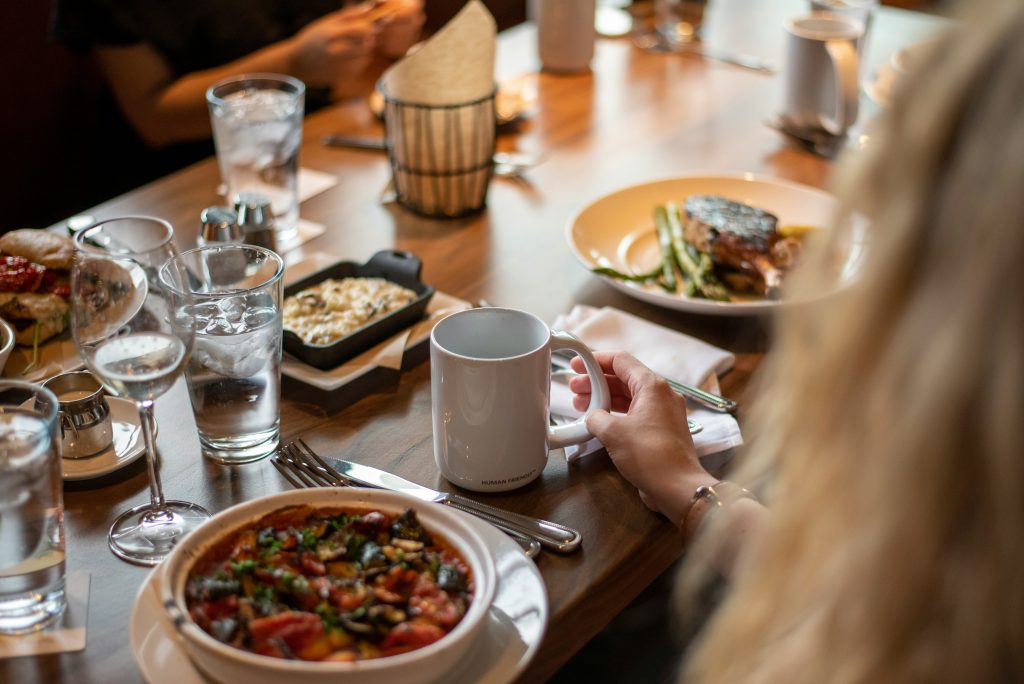Something is fascinating about where people choose to sit when they walk into a restaurant. Without thinking too much about it, most of us have a “go-to” spot that feels right every time. Some head straight for a booth tucked in the corner, others claim the first seat by the window, and a few head confidently to the bar. These choices might seem small, but psychologists suggest they reveal quite a lot about our personalities.
Studies show that more than half of diners return to the same type of table whenever they revisit their favorite restaurant. The layout, lighting, and even the shape of the table influence how we feel, talk, and behave. Restaurant designers have learned to read these preferences carefully, using them to shape the mood of a dining space. In many ways, your favorite restaurant tables are more than a piece of furniture. It is a reflection of who you are, how you connect, and what makes you feel at ease.
The Psychology of Where We Sit
Human behavior in restaurants is guided by comfort and familiarity. People tend to invest in their own well-being and sit where they feel most themselves. Introverts often prefer cozy booths or corners, while outgoing personalities gravitate toward open layouts or central tables where they can observe or be part of the flow. Research has shown that seating choice even affects dining time, with certain spots encouraging guests to stay longer or spend more.
Lighting and sound play a role, too. A softly lit corner feels intimate, while a bright, central table encourages energy and interaction. Restaurant layouts are carefully designed to balance these preferences, blending privacy with community. When you think about it, every seat in a restaurant has its own personality, and people instinctively find the one that mirrors their own.
The Round Table: The Harmonizer’s Choice
There is something timeless about a round table. It invites everyone to be part of the same conversation, with no one sitting at the head. People who prefer round tables are usually balanced, fair-minded, and value connection. They enjoy the feeling of equality that comes when everyone faces each other.
Restaurants use round tables to encourage longer, warmer conversations, and studies have shown that circular seating can raise group satisfaction noticeably. These tables are magnets for diplomats, mediators, and social connectors. Round-table diners are usually the ones who laugh easily, share stories freely, and make everyone feel included. They see dining as an experience to be shared, not just a meal to be eaten.
The Corner Booth: The Observer’s Haven
For some, nothing beats the comfort of a booth. The soft cushions, enclosed walls, and sense of privacy make it a favorite for people who value emotional safety and familiarity. Those drawn to corner booths tend to be steady, loyal, and introspective. They appreciate having their own defined space where they can focus on their company or their thoughts.
Booth lovers often prefer familiarity over novelty, choosing the same spot on repeat visits. Restaurants notice that booth areas often host the most loyal patrons. These diners are observant and thoughtful, people who like to watch the room quietly before joining in. The corner booth is their haven, a little home within the public world of dining.
The Window Table: The Dreamer’s Domain
A table by the window has a certain appeal. Creative people love it because of the perspective, the light, and the way things move outdoors. Artists, authors, and intellectuals often go to these places because they find inspiration in the movement and landscape.
Because everyone wants them, restaurants are meticulous about where they put window tables. Studies have shown that people who eat near windows often stay longer and feel more satisfied. People who sit at these tables are looking for a certain mood and a chance to think. They usually cherish serenity, beauty, and being free. The dreamer who sees stories in passing faces and peace in tranquil light owns the table by the window.
The Communal Table: The Connector’s Playground
At the heart of modern dining is the communal table, a place where strangers can become companions over shared plates. People who prefer these tables are usually sociable, curious, and open to new experiences. They enjoy spontaneous conversations and the sense of community that comes from sitting with others.
These diners thrive on connection and energy. Studies have found that communal seating encourages engagement and leads to more positive feedback overall. Guests who choose these tables often bring warmth to the room, influencing the mood around them. They are early adopters of new ideas, trend followers, and natural networkers. For them, dining is a chance to connect and explore, not simply to eat.
The Bar Table: The Independent’s Stage
The bar table generates its own energy. It appeals to folks who prefer being close to the action while remaining independent. Individuals who like high-top or bar sitting are typically confident, gregarious, and self-sufficient. They may come alone or with friends, but they feel at ease in both situations.
This demographic includes entrepreneurs, independent travelers, and those who prefer the relaxed pace of informal eating. Bartenders frequently describe bar-seated customers as approachable, friendly, and adaptive. Restaurants create bar tables to give these people a place to belong without requiring a large group. It is a venue for those who enjoy interaction while simultaneously valuing autonomy. The bar table serves as both their stage and retreat.
The Outdoor Table: The Free Spirit’s Retreat
Few things feel more relaxing than dining outdoors. People who choose patio or garden seating often crave fresh air, sunlight, and sensory experiences. They are usually optimistic, open-minded, and connected to nature.
These diners prefer a slower rhythm, one that matches the feel of a breeze or the sound of a city street. They enjoy variety, change, and the unexpected. Research shows that restaurants with outdoor furniture see higher guest satisfaction in good weather, reflecting the power of atmosphere. Outdoor-table lovers approach life with flexibility and ease, valuing experience over perfection. For them, every meal outdoors feels like a small escape, a reminder to breathe and be present.
A Seat That Speaks
Every time you walk into a restaurant, your favorite table quietly tells your story. It reveals what you value most, whether it is comfort, connection, solitude, or creativity. Dining has never been just about food; it is about how we feel and how we relate to the world around us.
Restaurants that understand these patterns create spaces that feel personal, places where guests feel seen and understood. The next time you sit down, notice the table you choose and the feeling it gives you. It could offer calm, excitement, or maybe a little bit of both. Whatever it is, that seat is your mirror. It speaks your language without saying a word, reminding you that even in a busy world, a simple table can reveal who you truly are.



